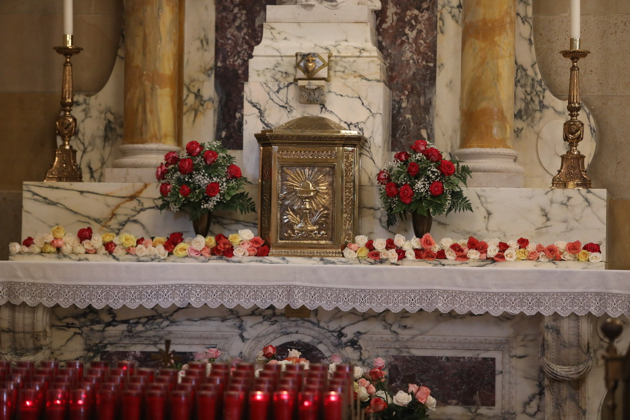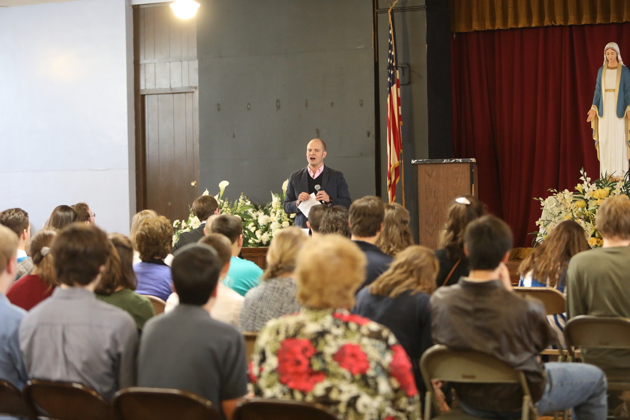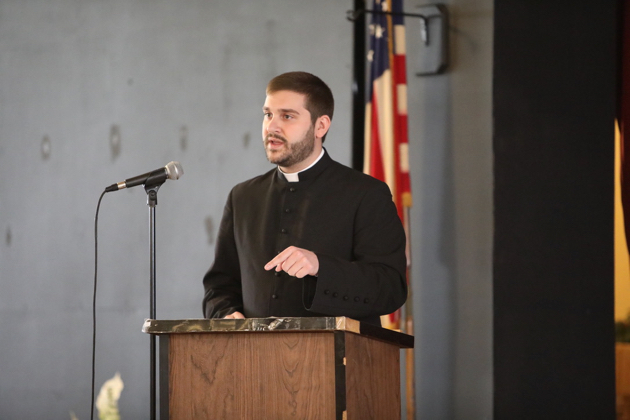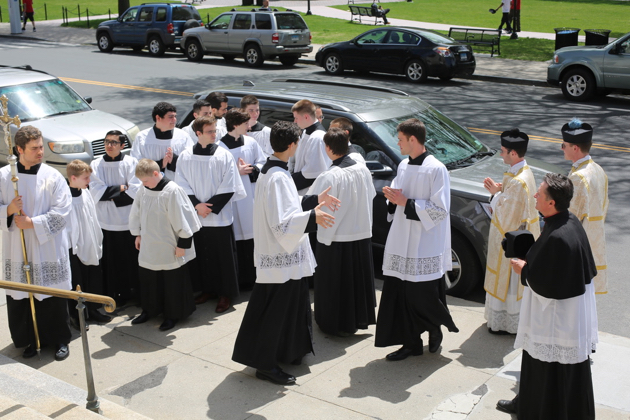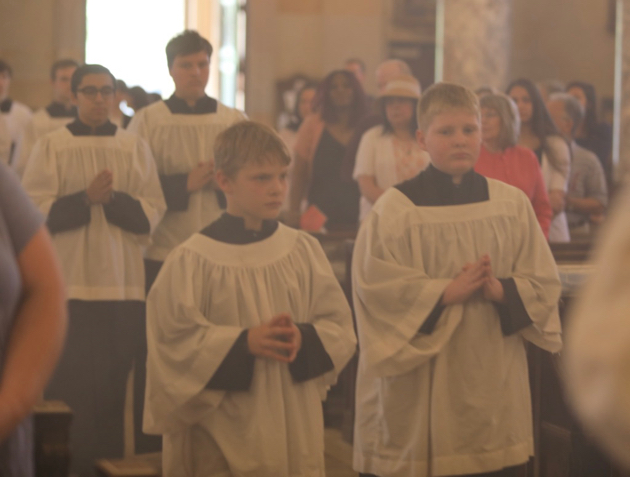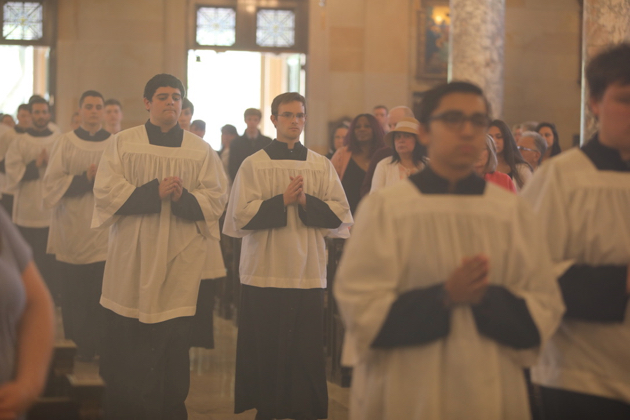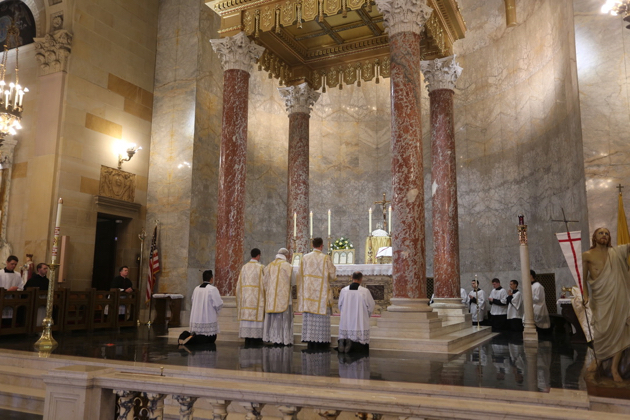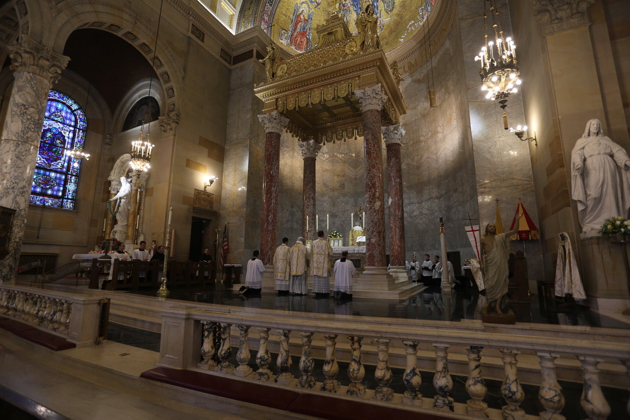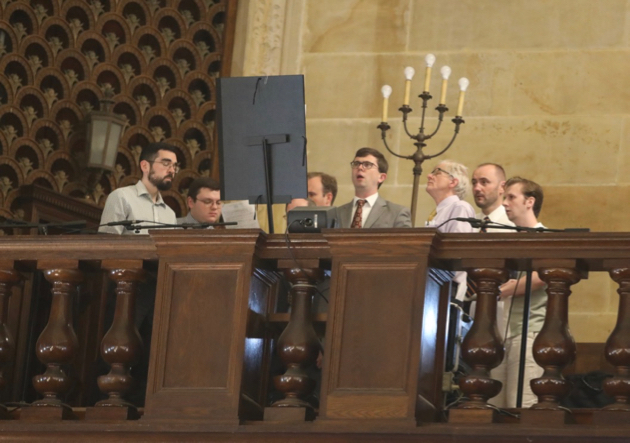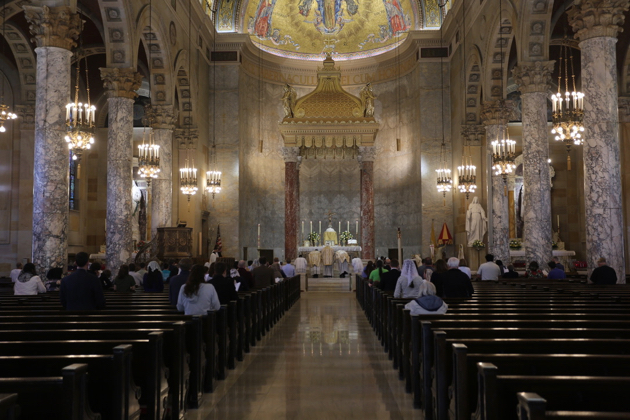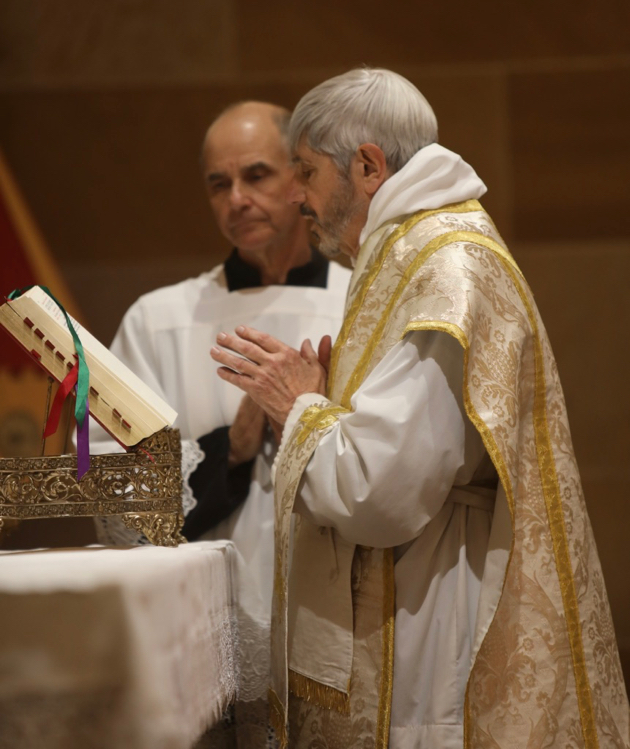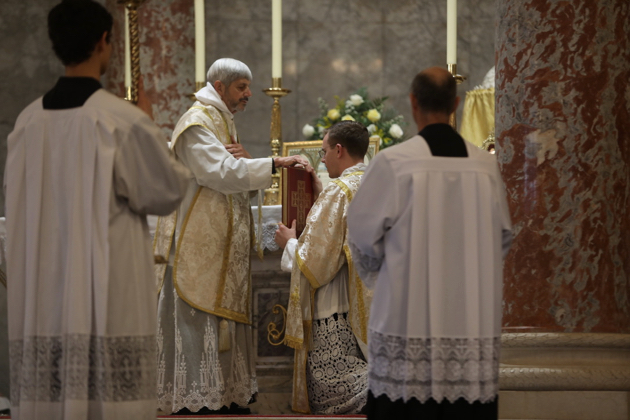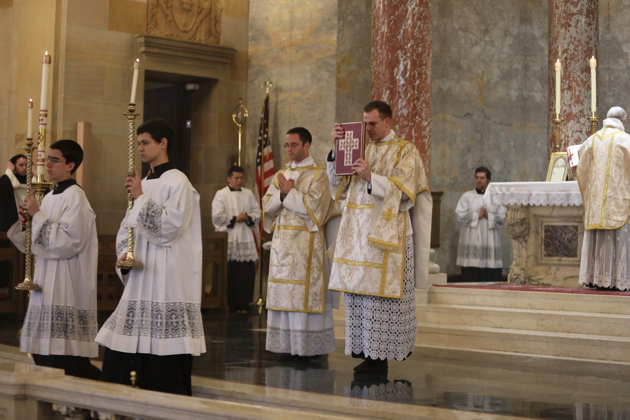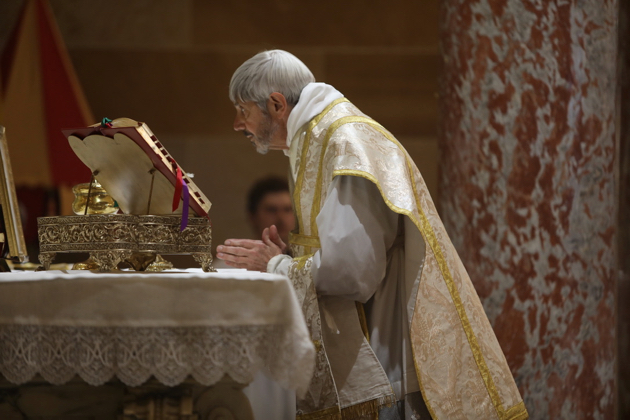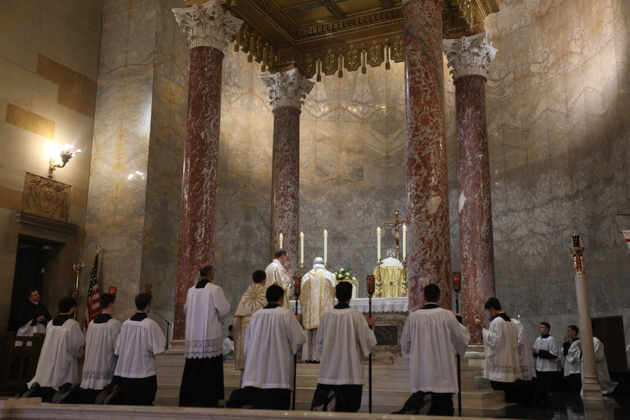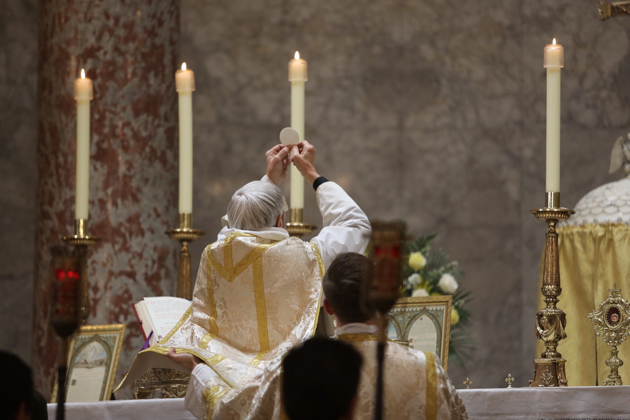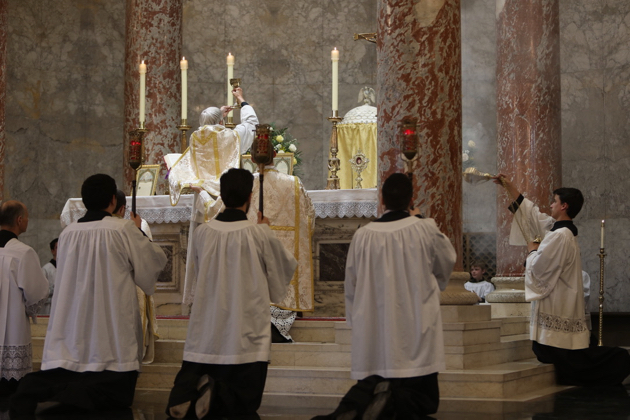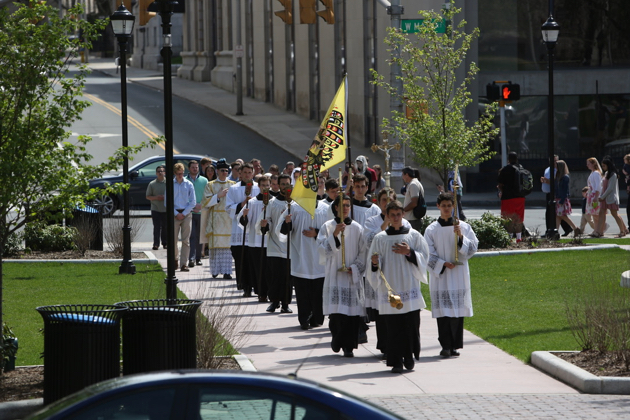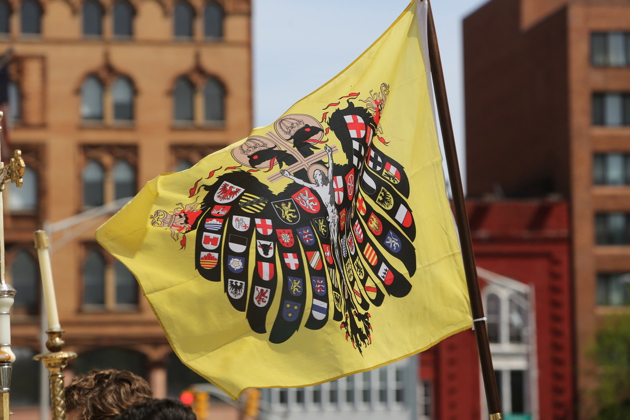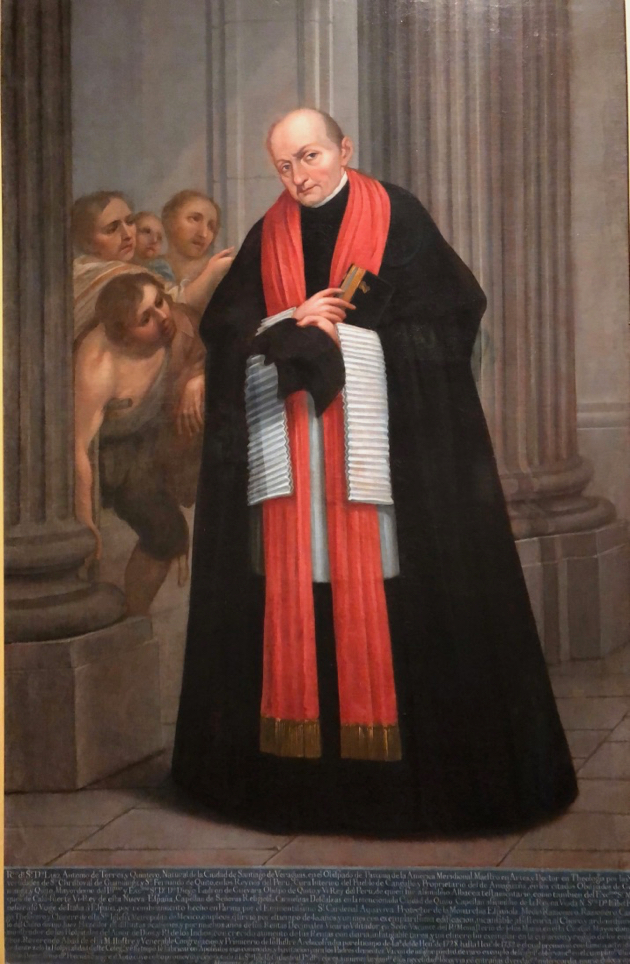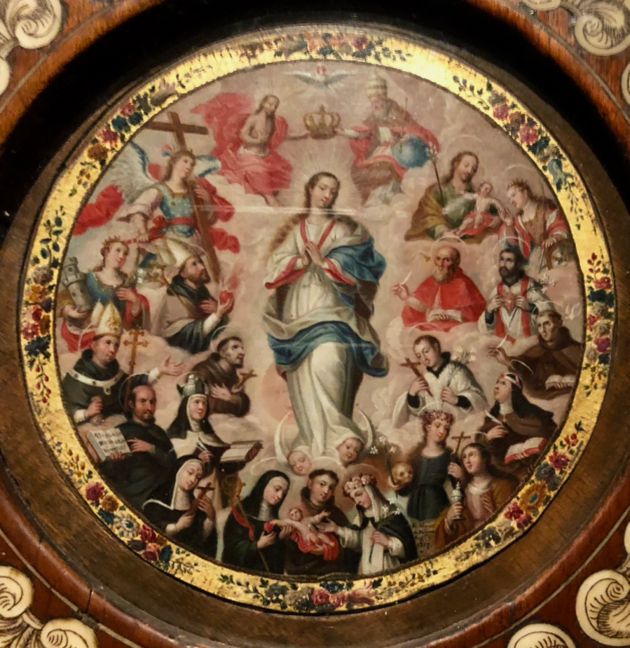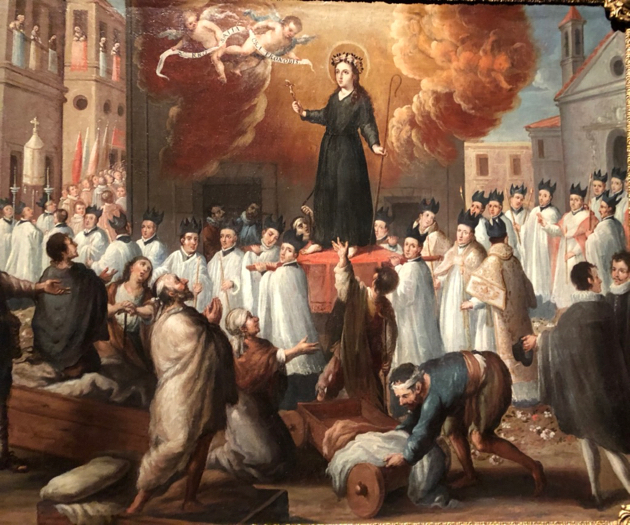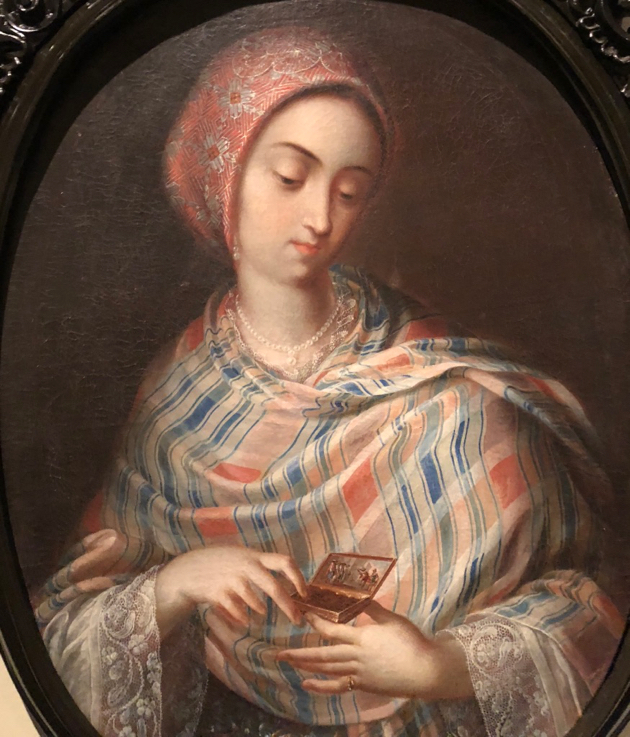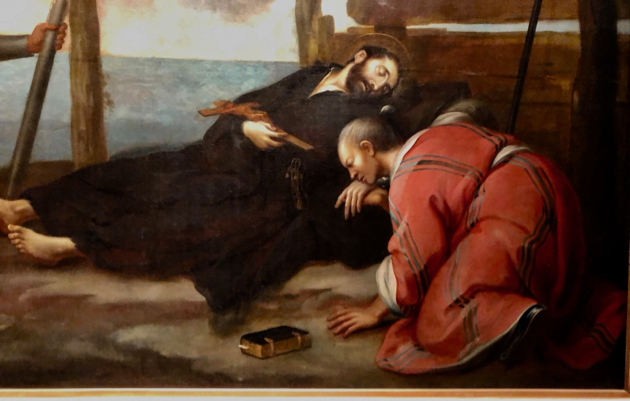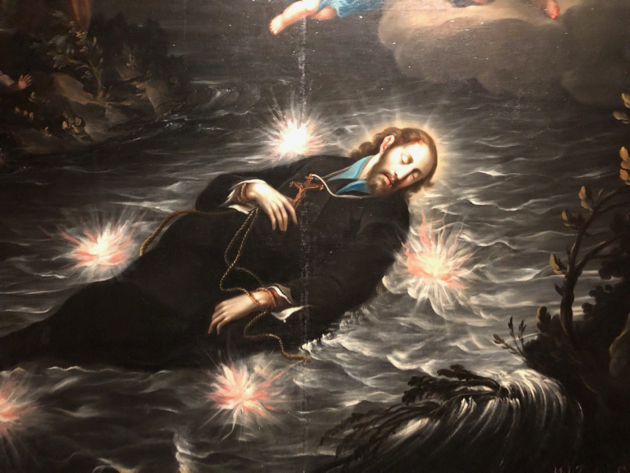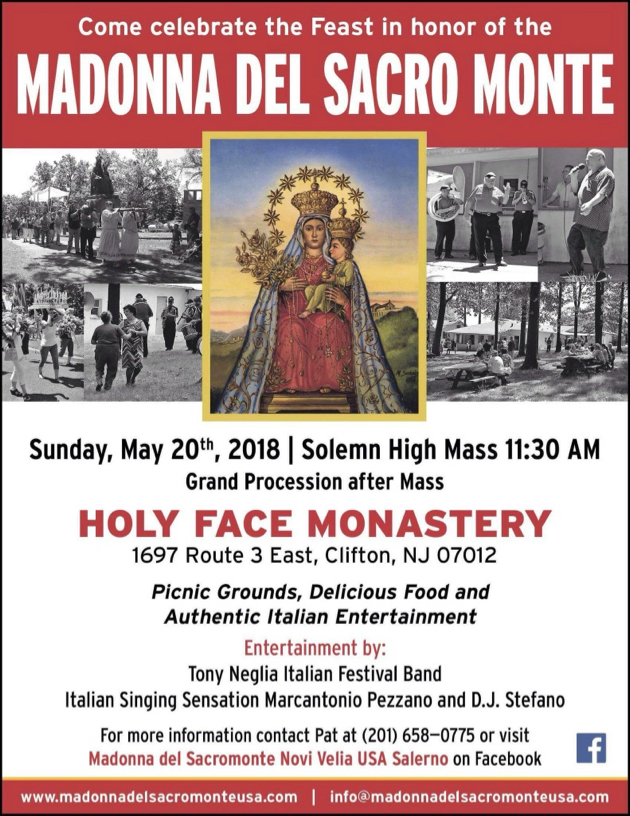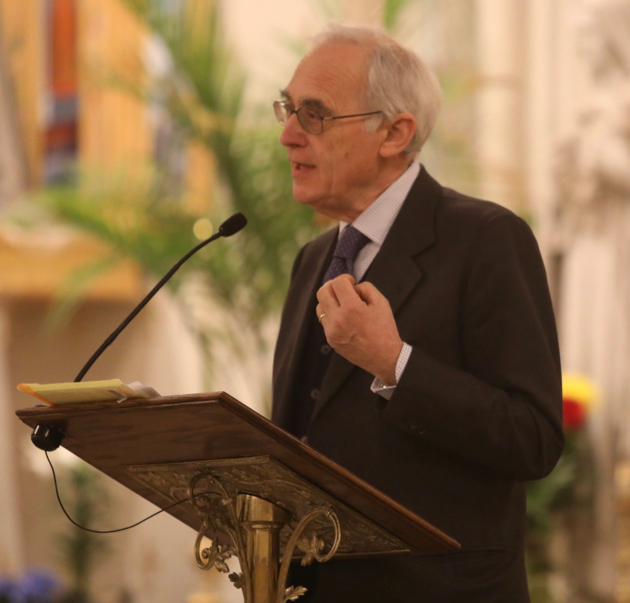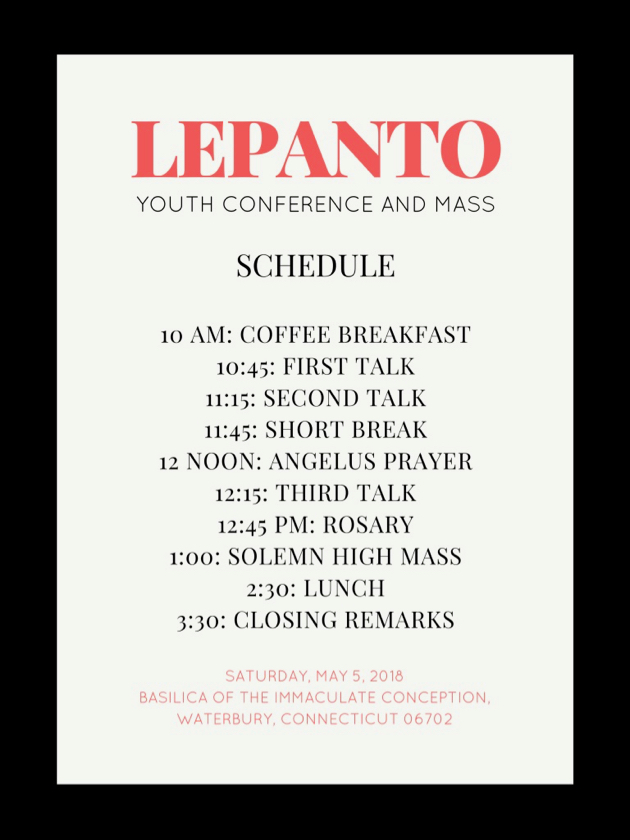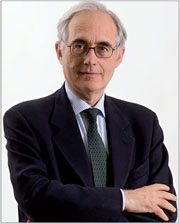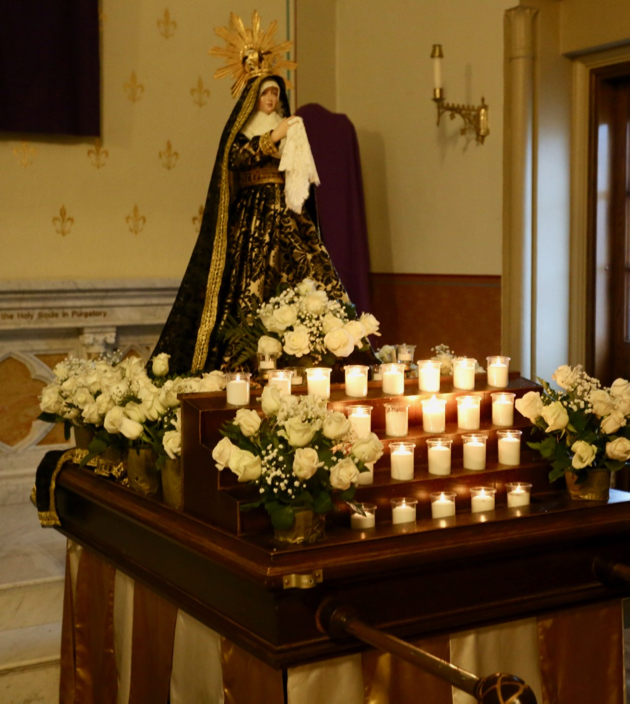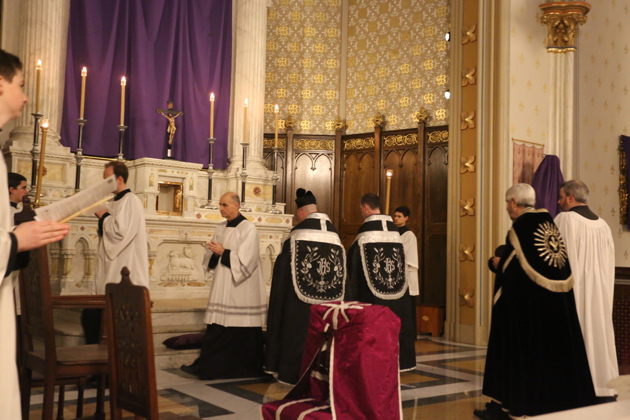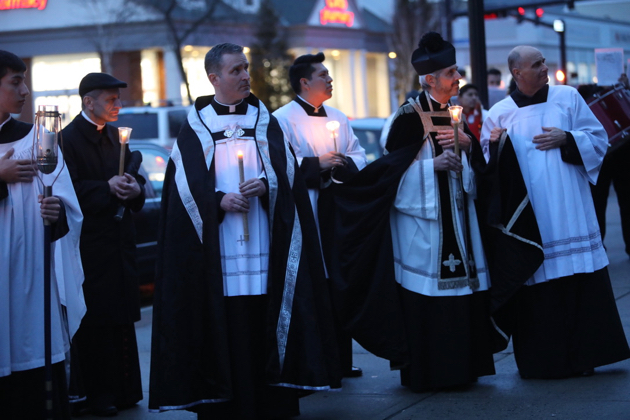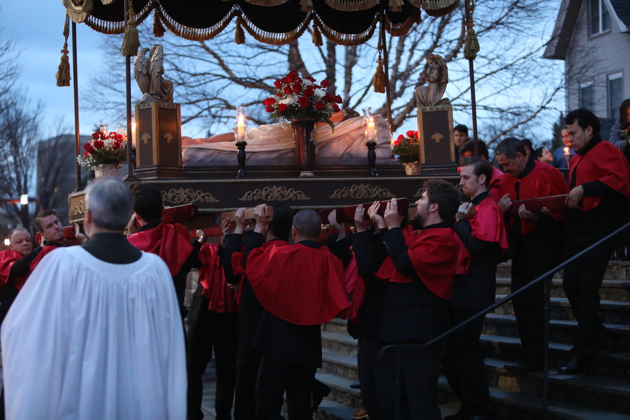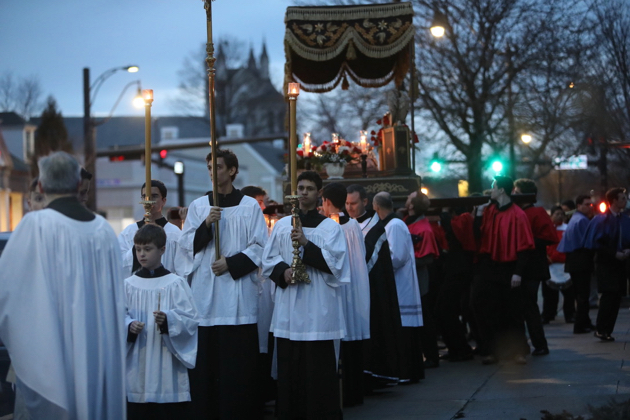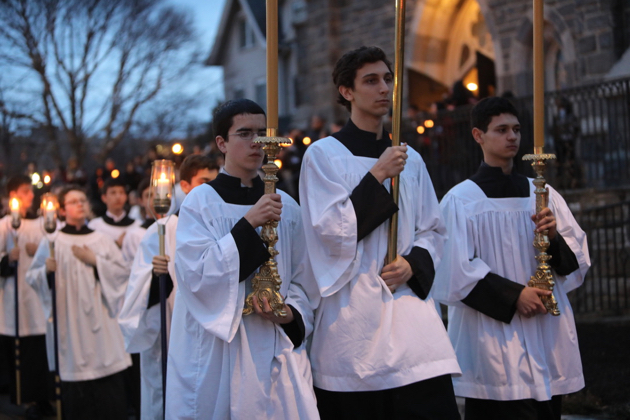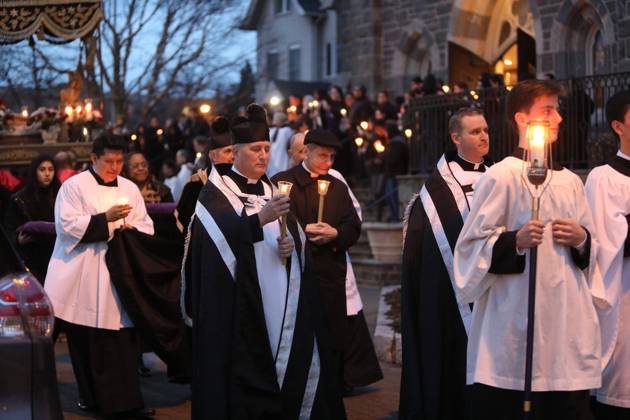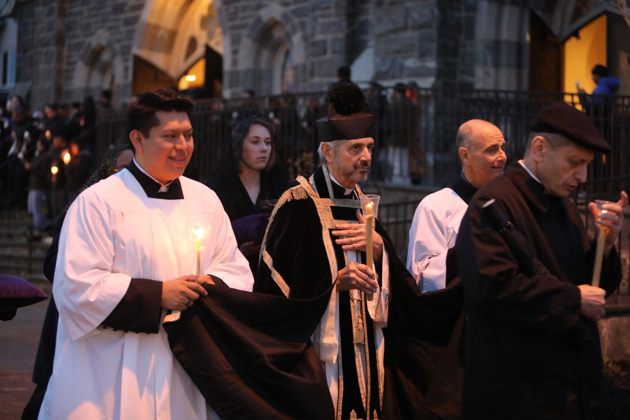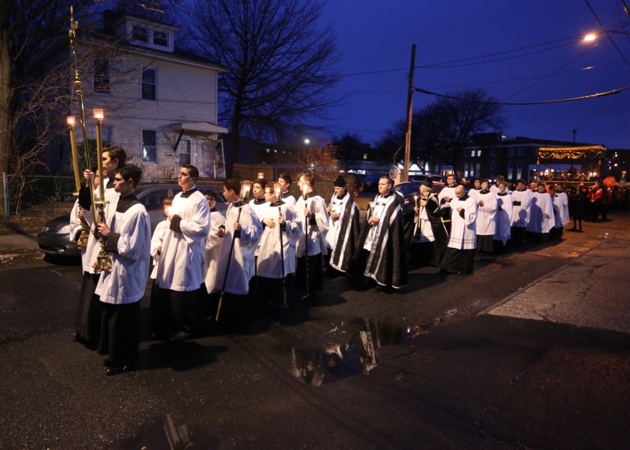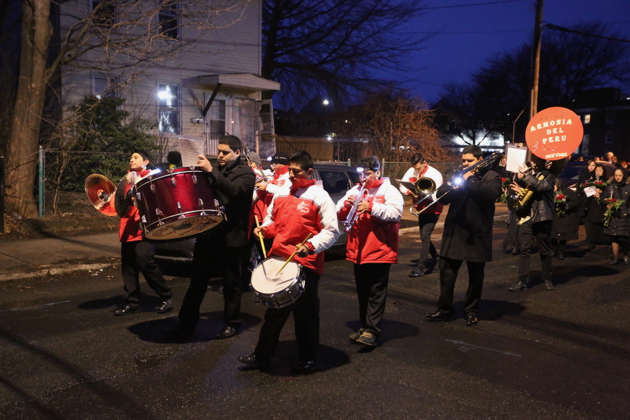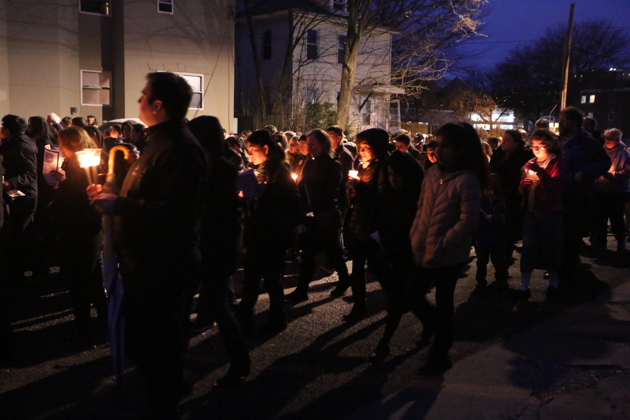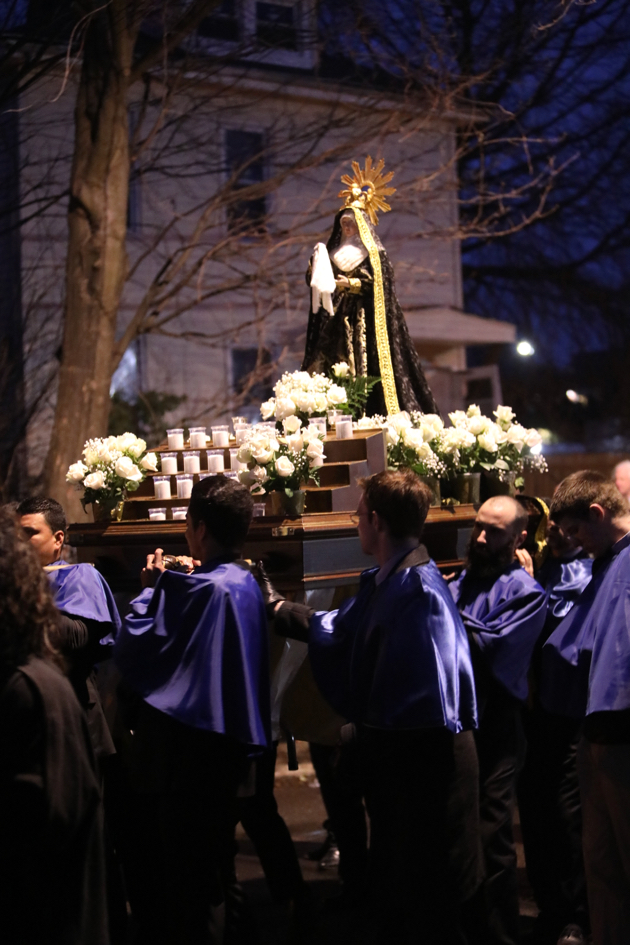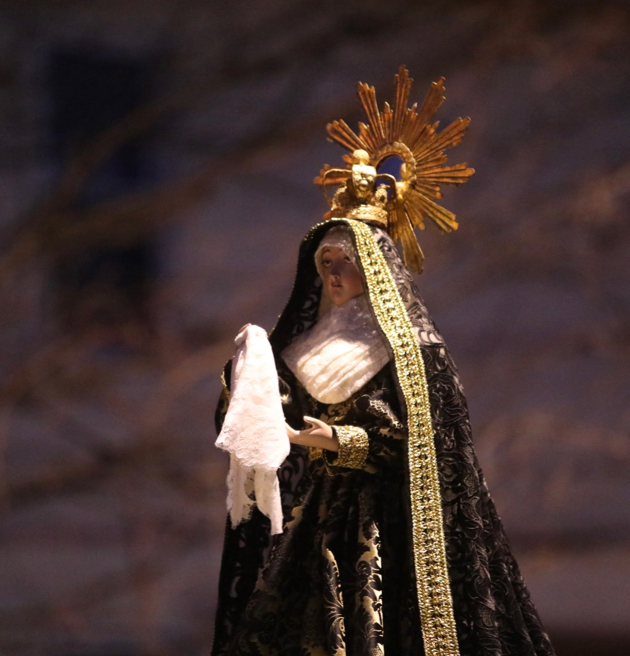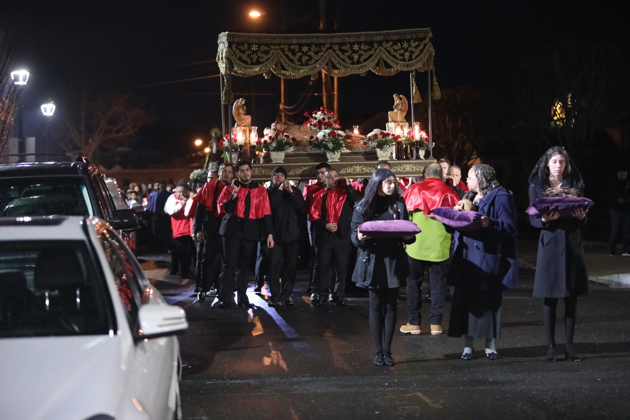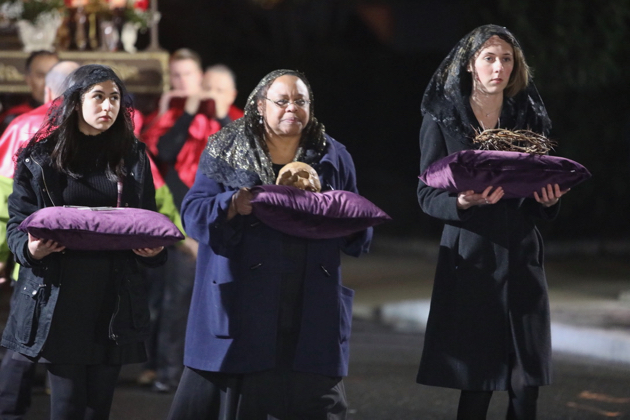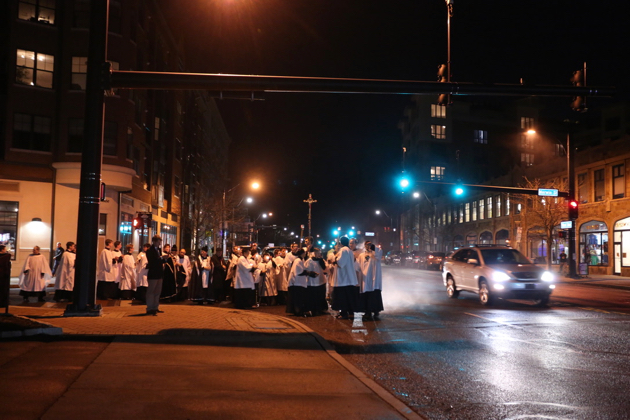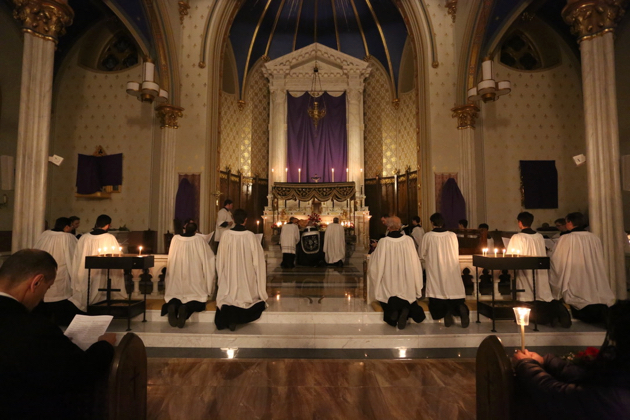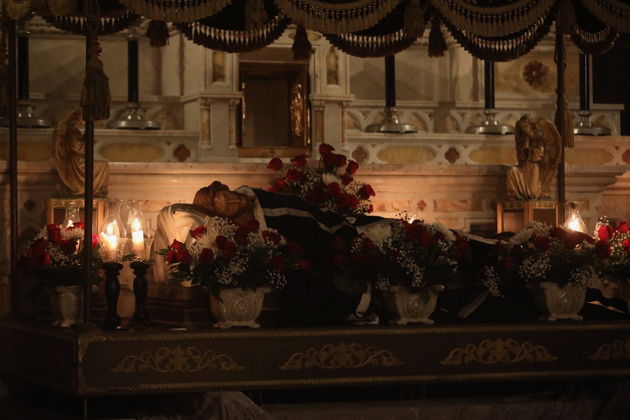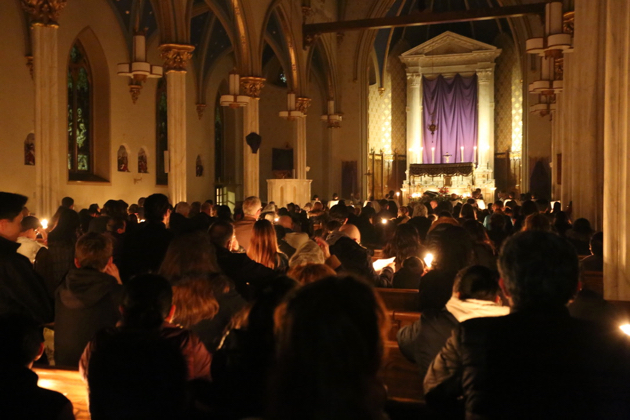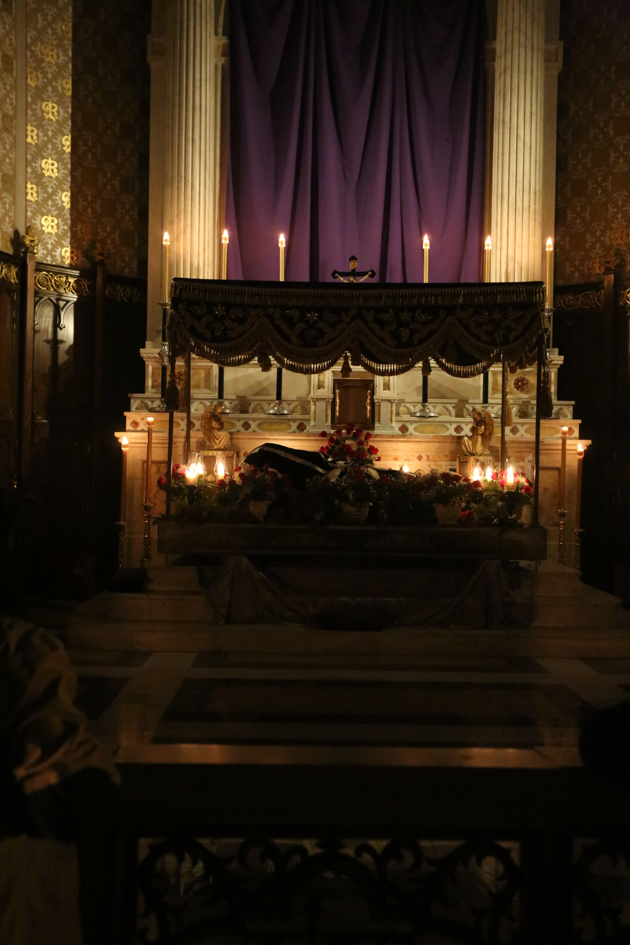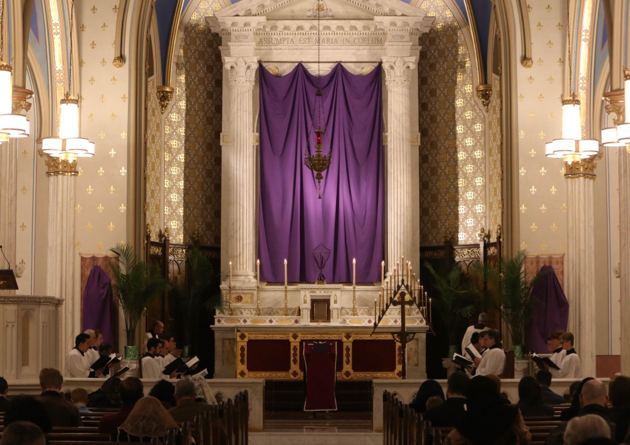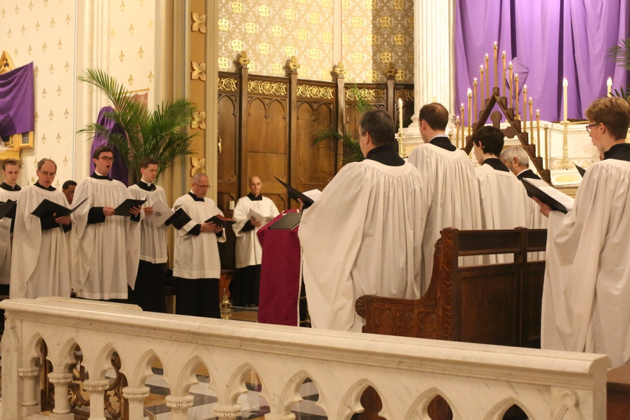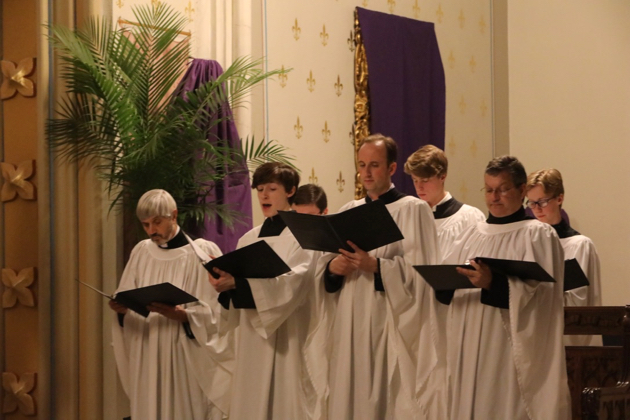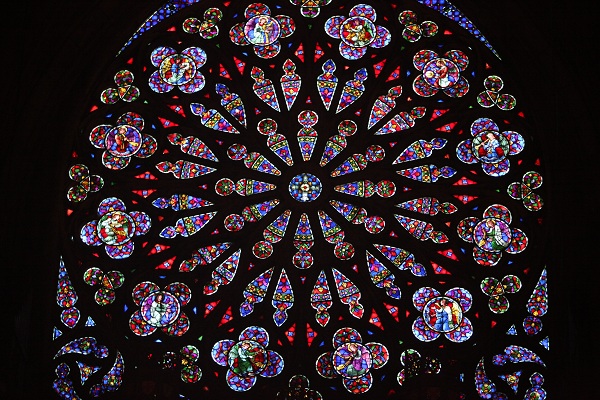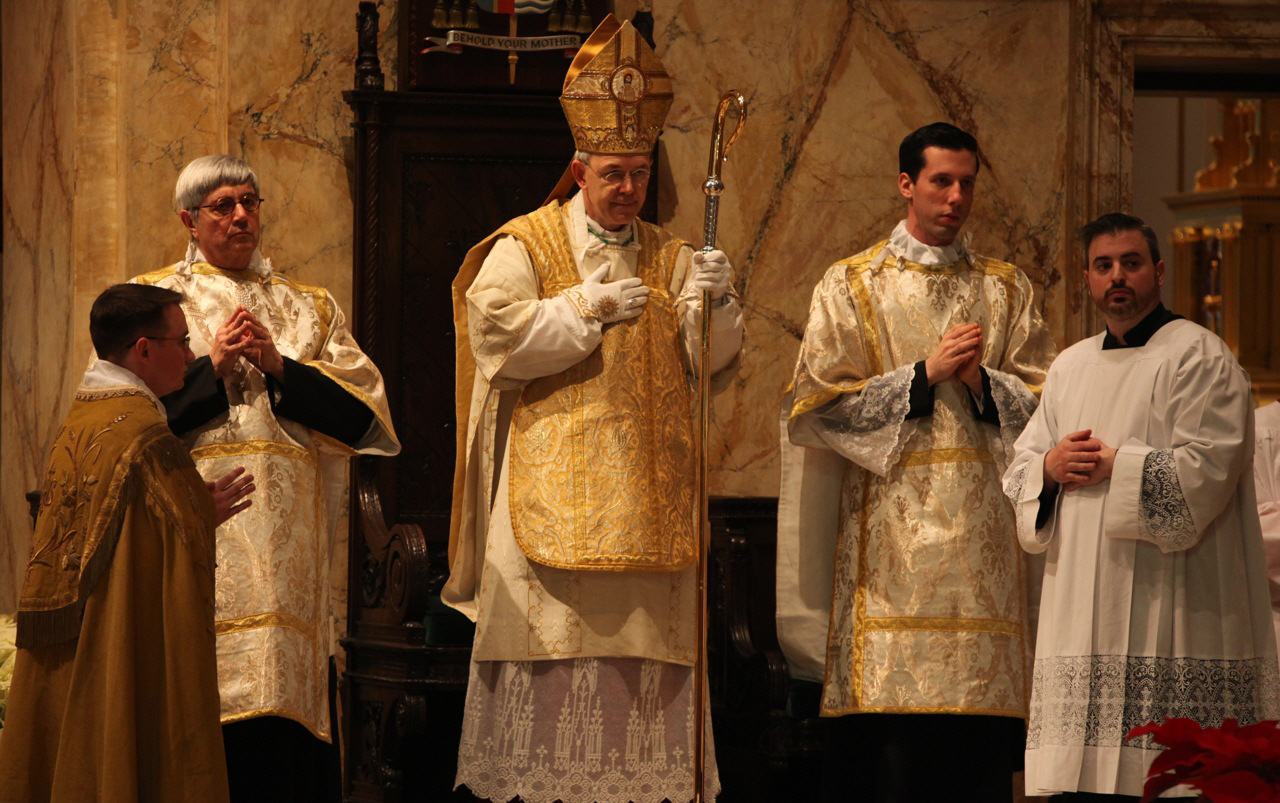Saturday was a perfect day for the Lepanto conference. It was the feast of St Pius V, with whose support the famous battle was fought. It was the same St Pius V who codified the traditional Roman rite, which was so beautifully celebrated at this conference. And to have all this take place amid the grandeur of the basilica of the Immaculate Conception in Waterbury, CT – the next best thing to a Roman basilica in America!
The vicar general of the archdiocese of Hartford in his 1930 history of the Catholic church in Connecticut described Immaculate Conception church as the “unquestionably the finest parish church in New England.” Apparently it was planned and built entirely on the local, parish level.
The conference downstairs was well attended. But for the solemn Mass at 1:10 many more people showed up.
The music was performed by Viri Galilei – a mens’ amateur schola – under the direction of David Hughes. it’s just one of the musical groups at St Mary’s parish, Norwalk.
A procession with a relic of St Pius followed the liturgy. Waterbury, like most Connecticut mill towns whose industries fled decades ago, is quiet on weekends. But this Saturday afternoon, the stillness surrounding the town’s old green was unexpectedly interrupted by the harmonious tones of plainchant.
(Above) It was heartening to see the banner of the Holy Roman Empire flying once more – this time in procession through an old New England mill town. (it was also used by the Holy League at Lepanto). We have covered the increasing number of concerts in New York City in recent years in which music of the empire has been performed – and identified as such. we hope to further this recovery of interest in the history and culture of this ancient Christian commonwealth.
It was a great honor for the Society of St Hugh of Cluny to sponsor this event. Our congratulations to the organizers of the conference, and we look forward to the second annual Lepanto conference next year!





